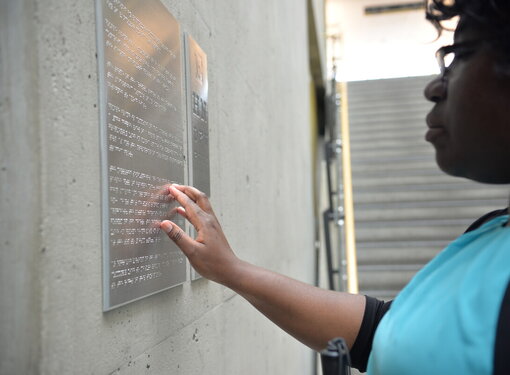Five Facts about Braille for World Braille Day
World Braille Day is celebrated globally every year on January 4, the anniversary of the birth of Louis Braille. The inventor of the reading and writing system used by millions of blind and partially sighted people around the world made such a difference to people’s lives that NASA named an asteroid after him in 1992 called 9969 Braille.
To celebrate World Braille Day, we've created a list of five interesting facts about Louis Braille and his invention:
1. Louis Braille Was Not Born Blind
At the age of three, Louis was playing in his father’s harness-making workshop in France, where he accidentally poked his eye with a stitching awl, a tool that resembles a nail attached to a handle. His injured eye became infected and spread to his other eye. The infection caused Louis to lose sight in both eyes by the time he was five.
2. Charles Barbier inspired Louis Braille
Charles Barbier was a French soldier and inventor interested in alternative writing forms. This stemmed from the belief that conventional writing was a barrier to literacy because it takes a long time to learn, and people earning a living did not have the time. Charles was also concerned about the barriers to literacy faced by those with vision and hearing loss. He invented a simplified writing system based on a grid where each letter was represented by a two-digit number (he also created a phonetic version, which he was said to prefer as the rules of spelling presented a barrier). Contrary to popular belief, Charles did not invent this form of writing for the military to use at night. His intention was for the writing method, pressed into thick paper with a punch, to be used by people who are blind. Charles wrote to the Royal Institution for Blind Youth in Paris, where Louis was a student, to inform them of his invention. Louis learned Charles’ system and then came up with a more compact and flexible system known simply as braille.
3. Make Room for Braille
The braille alphabet takes up more space than the traditional alphabet. Books in braille are much larger than the print versions. For example, Harry Potter and the Goblet of Fire is ten volumes in braille, and Webster’s Dictionary is 72. The Centre for Equitable Library Access (CELA) Library has 80,000 titles in accessible formats, including braille. It also includes a digital service that allows users to download braille and audiobooks. This public library is free to all Canadians who are blind or have vision loss.

4. Versions of Braille
There are two versions of Braille – contracted and uncontracted. Most children learn uncontracted braille before they go on to learn contracted. Every word is spelled out in the uncontracted version, whereas common words (such as don’t and won’t) are abbreviated in the contracted version.
5. Braille on Canadian ATMs
Ever wonder why there is braille on drive-through Automated Teller Machines (ATM) keypad buttons? The Americans with Disabilities Act (ADA) mandates that all ATMs must be accessible to people with vision loss. Since only a few firms make these machines in North America, we get braille on ATM keypads here in Canada. This ensures people who are blind or have vision loss travelling in the back seat of cars or taxis can reach the ATM and independently make a transaction. Another interesting fact: Canadian bills have tactile features consisting of a combination of six raised dots ($5: one six-dot symbol; $10: is two six-dot symbols; $20: three six-dot symbols; $50: four-dot symbols; $100: two symbols separated by a wide smooth surface to differentiate it from the $10 note) but this system is not braille. It was developed in consultation with blind or partially-sighted Canadians, as not all people use braille.
Braille is a helpful wayfinding tool and an important inclusive design feature. We hope you found these braille facts as interesting as we do and that you’ll have an extra appreciation for how this system came to be the next time you spot them when you’re out and about!






